The MacDurnan Gospels
This intricately decorated example of an Irish pocket Gospel book was produced in the second half of the ninth century, probably in Armagh. It is one of the earliest manuscripts in the Library’s collections. Once owned by Maelbright MacDurnan (Mael Brigte mac Tornain), abbot of Armagh and Raphoe, c.888, the book was given by King Athelstan to Christ Church, Canterbury, where charters were inserted into it concerning Christ Church’s possessions. Under the direction of Matthew Parker, Archbishop of Canterbury from 1559 to 1575, four miniatures from a thirteenth-century psalter (the Book of Psalms) were added and the volume was rebound.
The manuscript presents full-page miniatures of the four evangelists accompanying each of the four gospels. Displayed here is the evangelist John, seated with writing tool and book. Opposite him, on the right, is an inserted psalter scene depicting the entombment of Christ. Digital photography allows us to recreate the opening as it would have originally appeared before Parker’s insertions, with the miniature of John on the left-hand side facing the start of his gospel.
MS 1370, ff. 170v-171r. Ireland, Armagh (?); second half of the ninth century
See the fully digitised volume here.

Chichele Breviary
Shown here is a breviary, a book which sets out the psalms, readings and liturgical texts that make up the daily devotions of the clergy. This magnificent work is thought to have been commissioned by Henry Chichele while he was Bishop of St David’s (1408-14). Chichele subsequently served as Archbishop of Canterbury from 1414 to 1443.
The book has an elaborate decorative scheme with large borders rich in flourishes and heraldic devices. The scheme was directed by Herman Scheerre, a renowned illustrator of the day and recently arrived in London from Cologne. The opening shown here is the beginning of the Book of Psalms. Its large historiated initial B depicts the prophet Samuel anointing David, while the border includes the royal arms and the shields of Chichele and Canterbury.
MS 233, ff. 101v-101r. England, London; c.1408-14
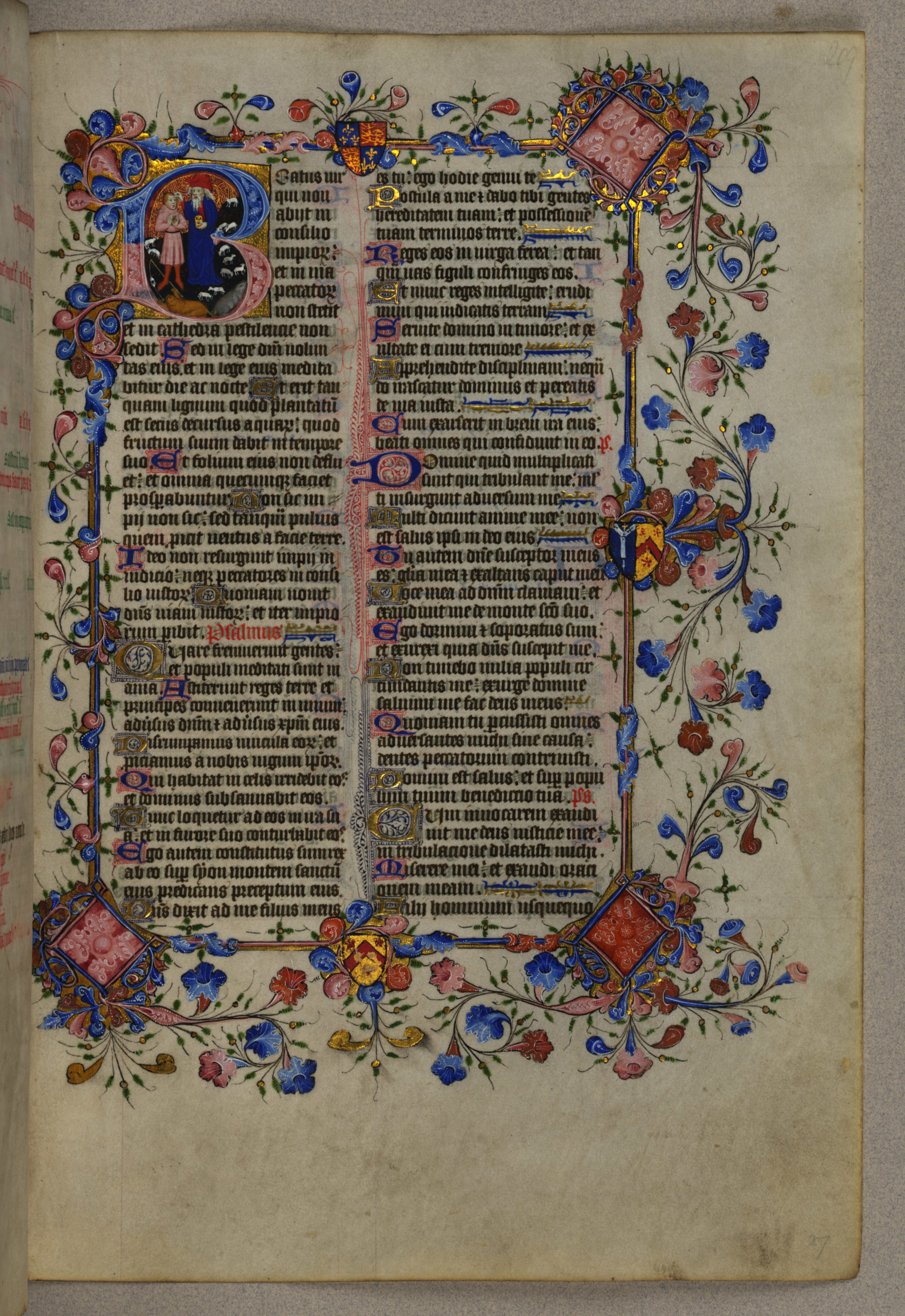
Vaux Bardolf Psalter
Psalters, containing the Book of Psalms, were important devotional texts in the medieval period and divided the psalms into groups for daily reading. The Vaux Bardolf Psalter, with its copious use of gold, employs a painstakingly produced script known as textualis precissa. This style was reserved for deluxe manuscripts which, along with the decoration and size of the book, reflected the wealth of their patrons. Who exactly the patron was is not known, but heraldic devices in the manuscript suggest a connection with the Vaux and Bardolf families; their banners can be seen suspended from the angels’ trumpets at the top of f.101r and in the line fillers on the opposite page.
The opening shown here is the beginning of Psalm 68, which commences with a large historiated initial S and indicates the place to start reading on Thursdays. The initial depicts Christ with a white orb and hand raised in blessing in the upper half, and Jonah being regurgitated by a whale, or great fish, below. Most psalters followed a standard decorative scheme by this time and this illumination reflects the psalm’s opening verse: ‘Save me, O God; for the waters are come in unto my soul.’
MS 233, ff. 100v – 101r. England; c.1310-c.1320
See selected images here.


Gutenberg Bible
The Gutenberg Bible was the first substantial book to be printed in Europe using movable metal type. Using the text of the Latin Vulgate Bible, it was produced in the 1450s by Johann Gutenberg in Mainz, Germany. Lambeth Palace Library’s lavishly illuminated copy, comprising the New Testament only, is one of just eleven surviving de luxe copies printed on vellum (a fine parchment made from animal skin) rather than paper. Originally catalogued as a manuscript, it remained unidentified at Lambeth until 1873.
Lambeth’s Gutenberg Bible may have been the first-ever printed book to reach England. The extensive hand-painted decoration is English work of the fifteenth century and was probably added not long after 1455. An English inscription dating from before 1500 also indicates that the book was in this country very soon after its publication. While many copies of the Gutenberg Bible are sparsely illuminated, if at all, the Lambeth volume has a beautifully painted initial and decoration at the beginning of each significant section.
MS 15 [Mainz: Johann Gutenberg, c.1455]
See the fully digitised volume here.
Sion College Talmud
The Babylonian Talmud is a central text of rabbinic Judaism, encompassing Jewish law, customs, history, and folklore. Printed by Daniel Bomberg in Venice, this book is one of the greatest achievements in the history of Hebrew printing and served as a model for all subsequent editions. Although the first edition was printed at the request of the Pope in 1519, Hebrew literature was being burned by the 1550s, with the result that surviving copies are very rare.
The Sion Talmud was given to Sion College in 1629 by the church of St John the Evangelist, Watling Street and the initials of the church, ‘SIEW’, are stamped in gilt on the covers of each of the twelve volumes. George Walker, incumbent of the parish, raised the substantial purchase price of £26 from eighteen of his parishioners, whose names are inscribed in the first volume.
A70.1/T14B(1), v.9 [Venice: D. Bomberg, c.1526-48]
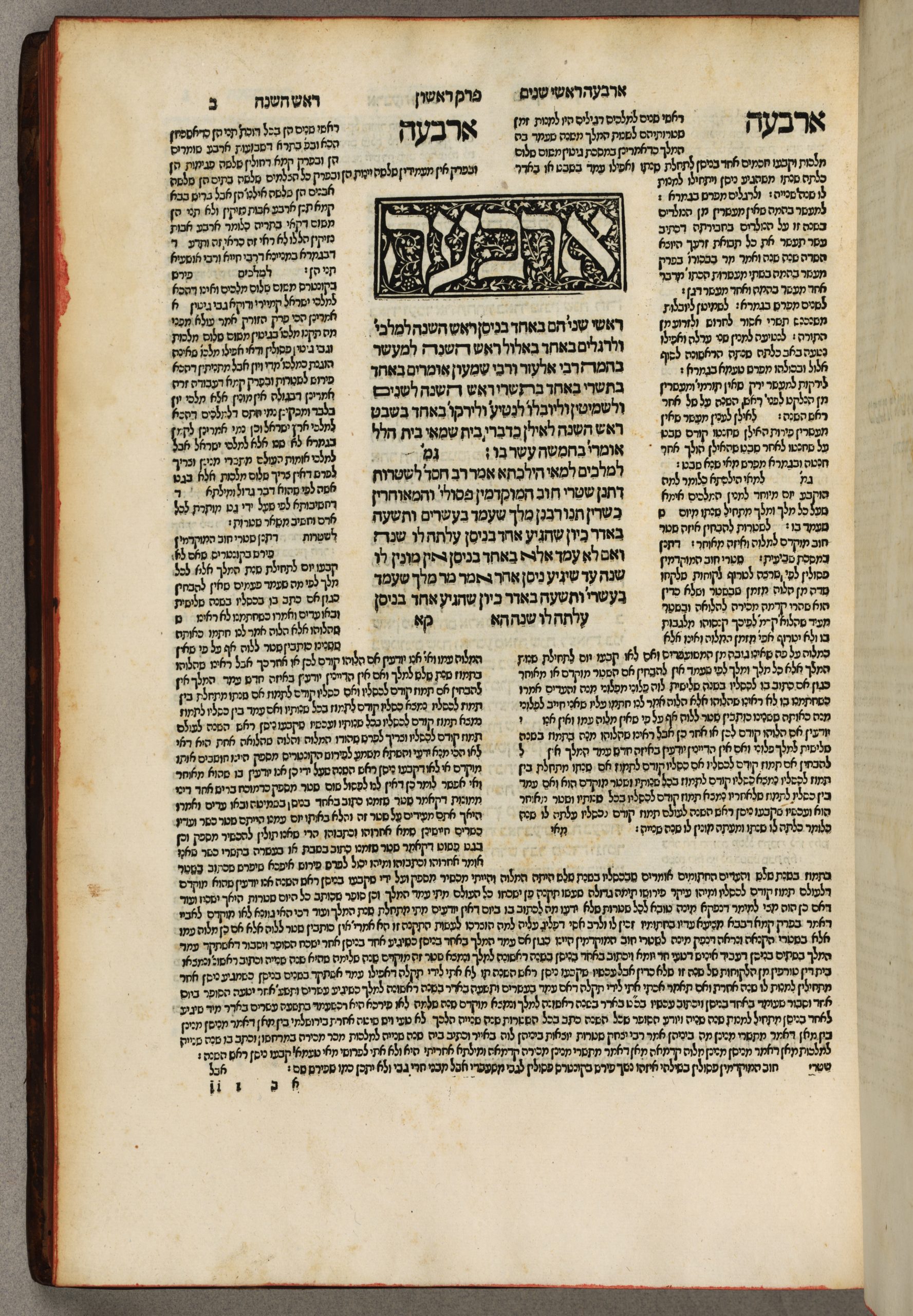
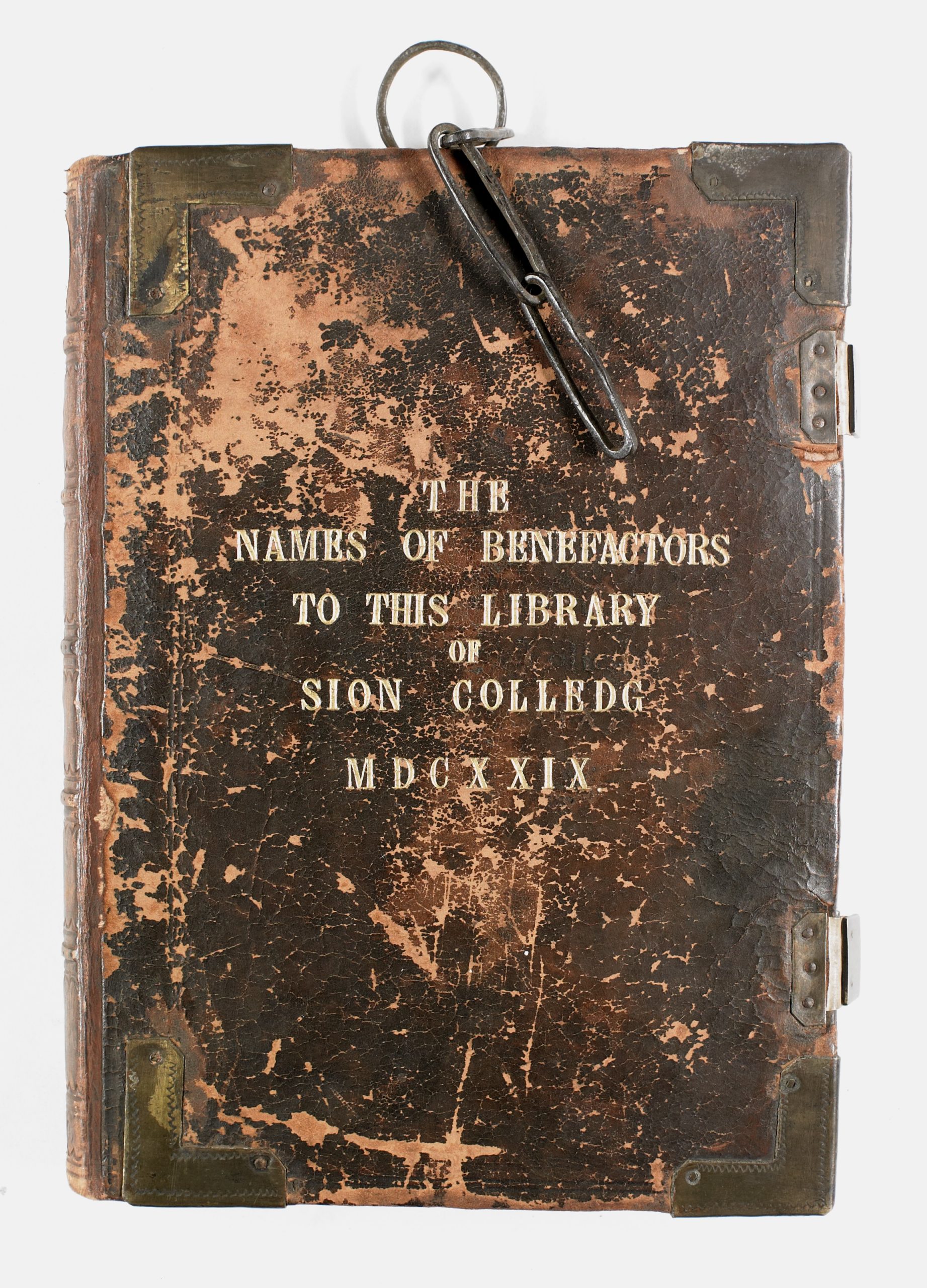
Sion College Library Register of Benefactors
Sion College was founded in 1629 as a base for the City of London clergy. As with Thomas Bodley’s library at Oxford University, the College looked to generous benefactors to fill its library with books. Donors and their gifts were recorded in an official Book of Benefactors, a huge register bound with silver ornaments and clasps. In addition, this smaller register was maintained for permanent display within the Library until 1723. Samuel Pepys and many other celebrities appear amongst the citizens of London as donors. Although many Sion books were originally chained to prevent theft, this is the only one in the collection which preserves part of the chain by which it was fixed to a desk.
When the library at Sion College closed its doors in 1996, its important collections of manuscripts and early printed books were transferred to Lambeth.
Sion L40.2/E105 [1629-1703]
Report on the Malady of King George III, 1811
From 1810 until his death in 1820, King George III suffered a period of severe mental and physical disorder, following similar episodes earlier in his life. In 1811, a Council, headed by the Archbishop of Canterbury, Charles Manners Sutton, was appointed to assist Queen Charlotte with the King’s care. The Library holds a fascinating collection of material relating to the Council, including correspondence from the Queen and over 3,000 daily reports provided by the King’s physicians, detailing the state of his health.
Initially in 1811, the King was given the freedom to live as normally as possible, but after a fresh bout of his disorder in May, Robert Willis, one of the signatories of this report, was placed in charge of his treatment. Willis instituted a regime based on isolation from any stimulus or excitement, and on restraint and coercion. One of the King’s few permitted distractions was music; the report mentions him
MS 2117, f. 27r
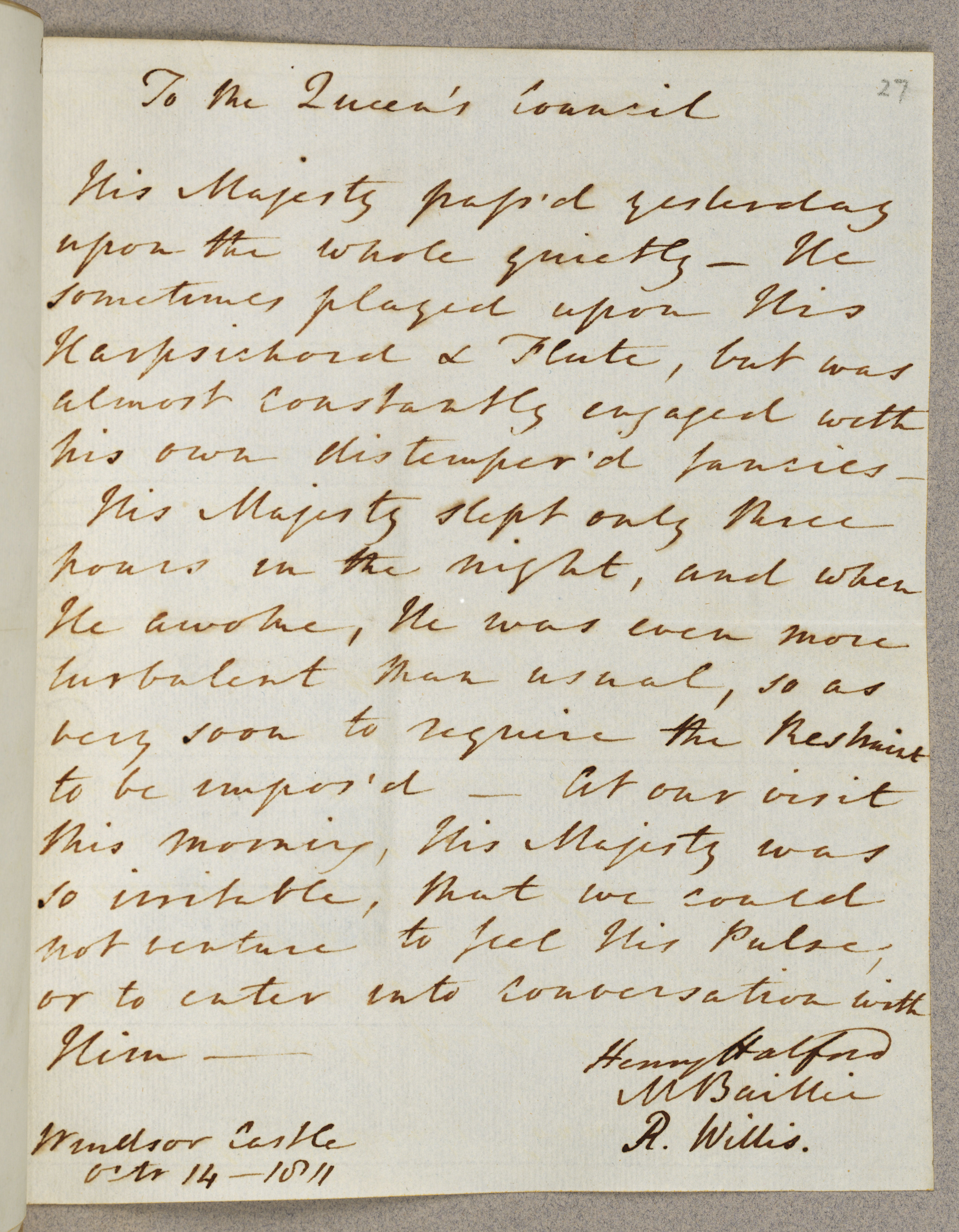
Our National Church
This caricature dates from 1883, the year after the death of Archibald Tait, Archbishop of Canterbury from 1868 to 1882. The Library holds a large collection of papers from Tait’s time as Archbishop, and his period as Bishop of London from 1856 to 1868. His influence is shown by his name on the umbrella representing the Church of England, which is in the shape of the dome of St Paul’s Cathedral.
Sheltering under the umbrella are the broad churchmen, including Tait’s successor as Archbishop of Canterbury, Edward Benson, who took a more tolerant view towards questions of ecclesiastical authority. The umbrella is being pulled from side to side by the evangelicals, led by the first Anglican Bishop of Liverpool, John Ryle, and the high churchmen, led by Revd Robert Gregory, Canon of St Paul’s. Like Tait, Benson’s time as Archbishop is extensively documented in the Library’s collections.
Prints XII/115
.
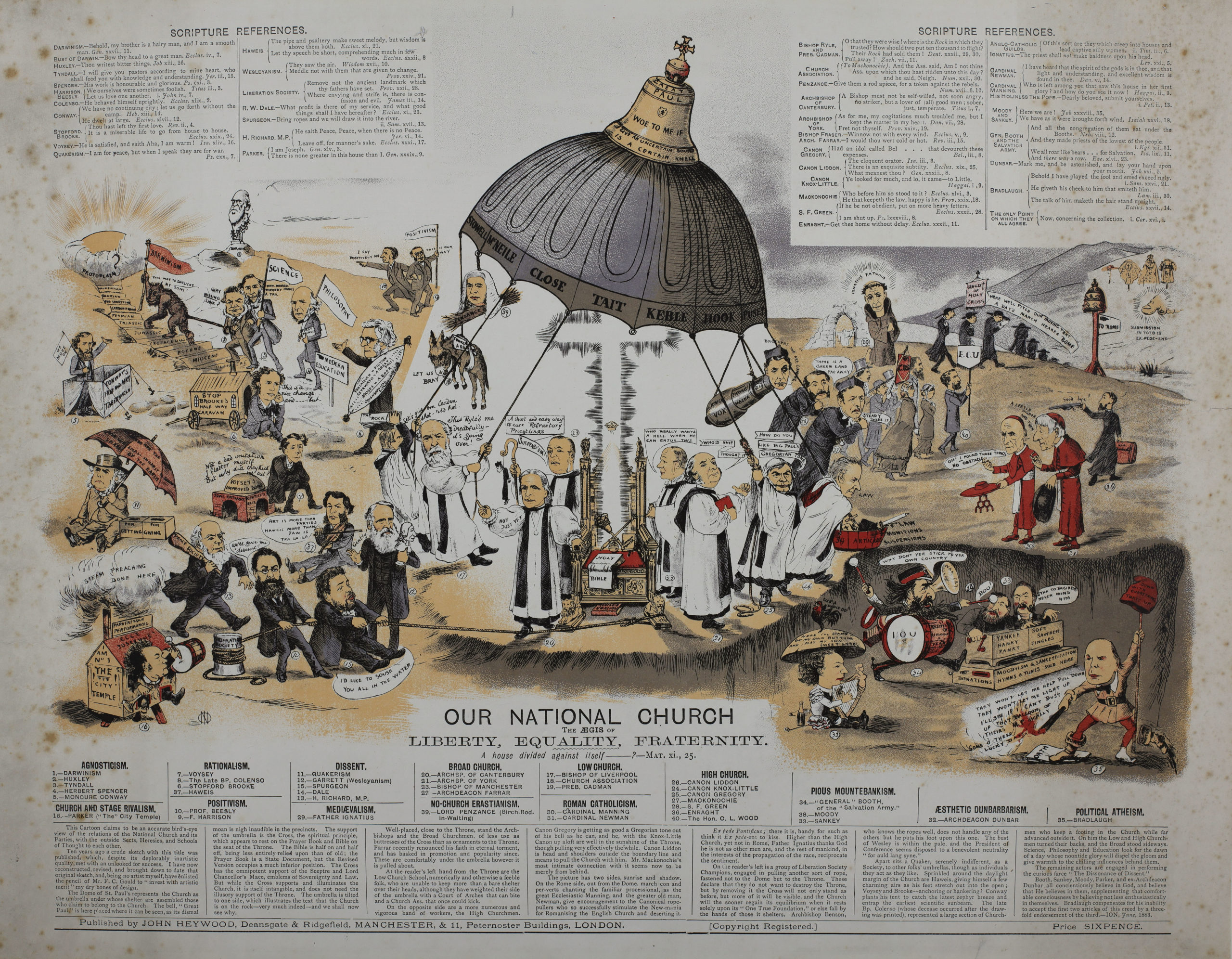

George Bell, Bishop of Chichester, and the poet T.S. Eliot
Bishop George Bell (1883-1958), who bequeathed his extensive papers to Lambeth Palace Library, was a noted devotee of the arts, and did much to encourage the writing of Christian drama and poetry, by authors such as John Masefield and Dorothy L. Sayers. In this letter, T.S. Eliot declines a proposal by Bell that he write a pageant play.
Eliot often visited Bell at the Bishop’s Palace in Chichester, and it was through Bell’s encouragement that Eliot wrote his 1933 pageant ‘The Rock’, mentioned here, which concerns a group of workmen building a church and which was performed to raise money for the building of new churches in London. Eliot’s play ‘Murder in the Cathedral’, about the death of Archbishop Thomas Becket, first performed at Canterbury a few weeks before this letter was written, may also have been inspired by conversations between the two men. As a play about tensions between Church and State, it fitted well with the times; Bell was to become particularly well known for his opposition to obliteration bombing of German cities during the Second World War.
Bell 156, f. 94r-v
For the Queen
This 76-page book was personally prepared, and presented to Her Majesty the Queen by the then Archbishop of Canterbury, Dr Geoffrey Fisher. It includes a series of daily meditations on each step of the Coronation Day, beginning on 1 May with ‘The Way to the Abbey’, and ending on Coronation Day with ‘Morning and Evening Prayer’. It therefore touches on every detail of the Coronation service, summarising its meaning for the Queen and explaining the relationship between the monarch and the people.
**KA113 1953 Printed for private circulation, 1953
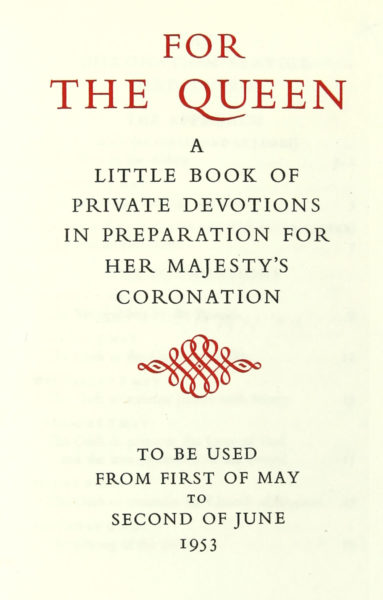
Treasures from the Collections I ran from 11 November to 17 December 2021 and was the first display put on in the new building. For those that missed it we have prepared this electronic version containing some of the highlights.

